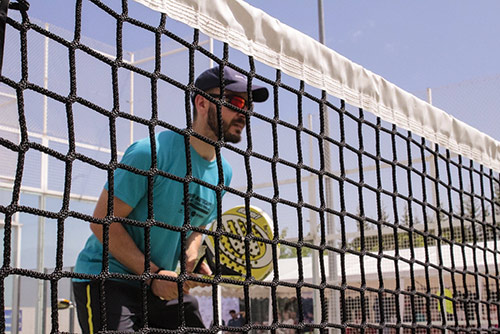
By Maryann Santos
Sports. It’s a profession, an outlet for stress, an opportunity for weekend warriors to let loose their Herculean strength and endurance, and a major part of so many lives. Vision plays an important role in sport performance, reaction time and color discrimination. This article will explore the visual needs of athletes and how opticians can guide their patient athletes with the best lenses to help them perform at their optimum ability.LIFESTYLE DISPENSING
The optician’s role is to fit patients with the optimum frame and lenses for their vision and lifestyle. Lifestyle dispensing offers the opportunity to build relationships with our patients by asking them what they do for work and if they have hobbies or interests. People are seldom asked these questions. With our busy lives, we miss out on getting to know the people in our circle. Did you know that your co-worker swims three times a week before work? Did you know that your neighbor plays competitive ping-pong every Tuesday night? Did you know that your son’s best friend’s dad is a target shooter? Did you know that the librarian you see every two weeks is an avid hiker? Think about it, when we ask questions of our patient’s lifestyle, we glimpse into their world and can help them see their best playing a sport that they enjoy. Start by asking questions.
SPORTS PROTECTION EXPERT
Being a sport frame and lens expert can set you apart in your industry. Get to know your sport frame/lens representatives. Attend national, local and regional education conferences. Explore the exhibit hall and talk with sports protection and vision performance companies.
Sport eyewear, first and foremost, protect the eyes and help prevent injury. Frames are designed to meet ASTM sports impact standards. When you are the sport frame expert, you will know your product and which frames suit particular sports and the speed at which the ball for that sport travels.
LENSES
Sports in variable light conditions require a photochromic lens that changes with the amount of UV light emitted and received. By offering changeable polarized lenses, you meet the athlete’s need for lenses that reduce glare and help improve athletic performance. These unique lenses darken and polarize with the changing amount of light. Cyclists and hikers would benefit from this type of lens.
Motorcycle riders now have the option of a ``light intelligence” shield. These helmet shields are clear at night and darken to a smoke gray in bright light. The shields also block 100 percent UV light and blue light.
Polarized lenses reduce a significant amount of glare and help with reaction time for athletes. Amber lenses filter out blue light and are favorable for the baseball player, golfer, skier, and cyclist.
Gray lenses do not alter the color state of objects. These lenses are overall a good lens color choice for most sports on bright, sunny days. Many shooters prefer yellow lenses as they tend to enhance the contrast between the target and the background. Yellow lenses filter blue light and help the wearer achieve sharper focus, especially in hazy and low-light conditions.
Find out how your athlete patient participates in sports. Ask good questions. Your target shooter might only shoot outdoors, which would affect your lens choice. See if there is an optometrist in the area who specializes in sports vision. Go out for coffee/tea, get to know what they do and how they do it so you can better explain the process to your patients. Who knows? You can develop a working relationship and refer patients to the sports-vision optometrist, and you can be the sport protective frame and lens expert.
THE SPORTS VISION EXAM
The sports vision optometrist performs a routine eye exam followed by an in-depth evaluation of a patient’s depth perception, eye movement skills, contrast sensitivity, central and peripheral visual recognition, eye-hand-body coordination and visual concentration. If the optometrist identifies a weakness in an area, depending on the findings, vision training/therapy or lens tints may help. If you want to explore more, take a delve into the International Academy of Sports Vision, talk to your sports frame representatives and be the go-to optician for your local athletes.
For information on sport eyewear, go to our CE, “Upping Your Game: Taking Outdoor Sports Eyewear to the Next Level, Part 2,” at 2020mag.com/ce.













